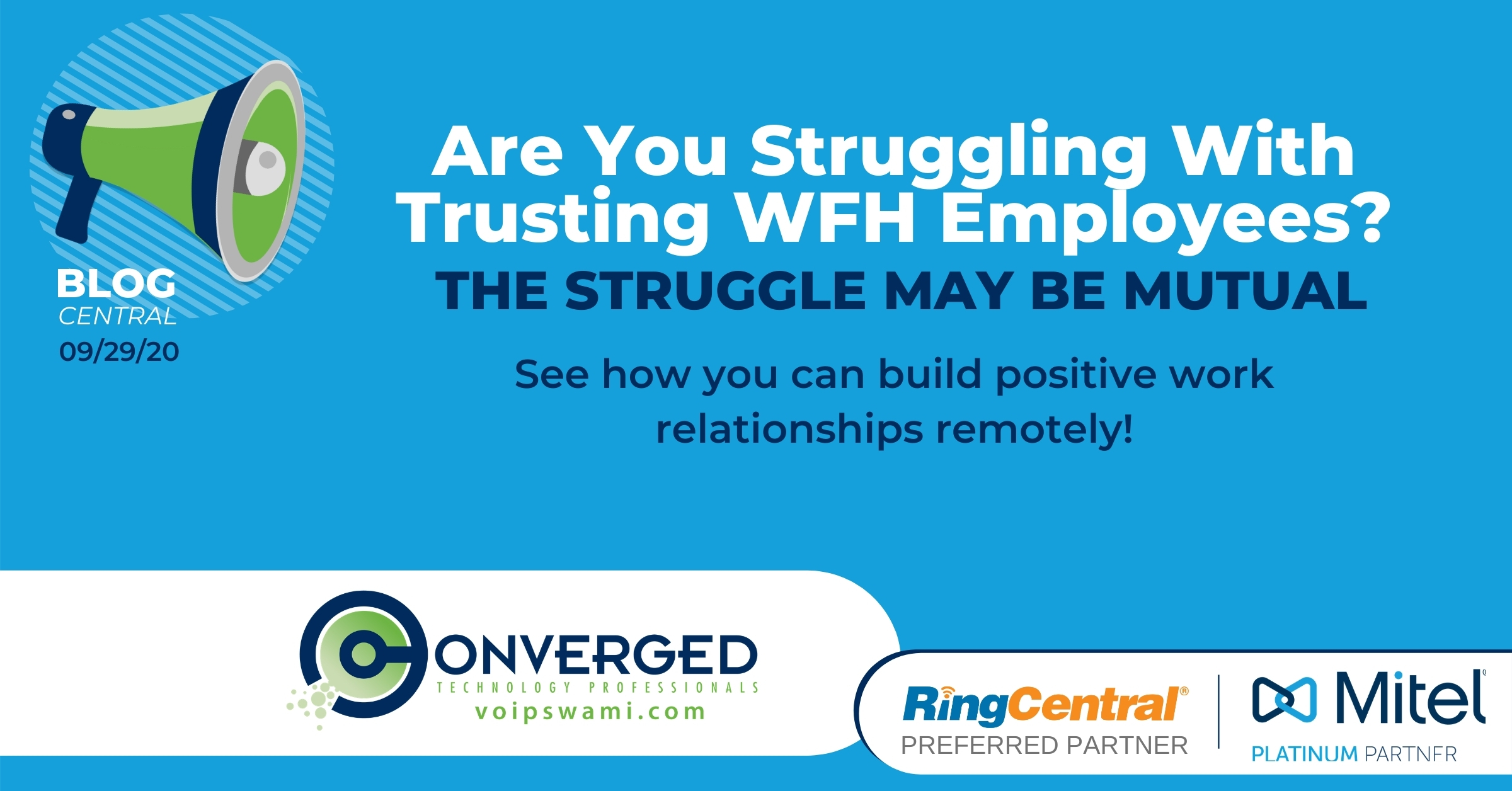
For over a decade, technology has made it possible for teams to work remotely in a faster, cheaper, and more effective way. Just as momentum began to build for a new way of working in 2013, Yahoo CEO Marissa Mayer famously pulled the plug and called time on remote working. Seven years and a global pandemic later, Twitter revealed that staff would be allowed to work from home forever.
Many hard lessons have been learned from moving to a remote workforce. Corporate culture has become much more collaborative, and there is a constant growing list of reasons why staff should be encouraged to work from home.
Teamwork and the combined efforts of individuals give a compelling argument that there is only one winner in a battle of Me vs. We. However, the elephant in the room is both employees, and their managers have a few trust issues that need to be worked out before we can genuinely move forward.
Why bosses and employees have trust issues when WFH
During the hiring process, bosses carefully handpick their next employee from a long list of candidates. A big part of the selection process is ensuring the successful applicant can be trusted with confidential business information and financially sensitive details.
Despite this rigorous process, many managers fail to manage by goal setting and measuring results along with collaborative communication efforts, and instead misinterpret the lack of social interaction with a lack of work progress or overall work ethics.
As Millennials and Gen-Z workers dominate the workforce, organizations need to let go of their trust issues if they want to retain top talent. According to Owl Labs, 83% of workers, remote or on-site, advised that working remotely would make them happier. Not having to go to the office every day and take a break from commuting, cubicles and water coolers as obvious benefits.
But employees have trust issues too.
Many remote workers often feel neglected and that when they are out of sight, they are also out of mind. Others believe that flexible working actually means always being online and available after normal business hours. Recent research by Microsoft highlighted how some workers were often working an additional four hours a week.
Increased breaks during the day for childcare, exercise, or dog walking caused employees to overcompensate. For example, the study also showed that instant messaging increased by 52% between 6 pm and midnight.
To avoid burnout becoming a real risk for employees that don’t create boundaries, there needs to be an open and honest conversation around what is and what isn’t expected of them.
Building mutual trust in a remote environment
We have already covered seven habits of highly effective remote teams, but when it comes to trust, it goes both ways. Employees shouldn't be made to feel they need to do more to prove their value and worth when they don't have the in-person communications and relationships they once had.
Bosses also need to remember the qualities and reasons why they hired their workers in the first place. The good news is that mutual trust can help build a solid foundation and help both parties overcome their trust issues together.
Transparency through Digital Communication Tools
Digital tools can increase transparency by enabling you to share your workload and priorities with your entire team. It will also set clear expectations on what you will set out to achieve each week while showcasing your organizational skills.
Structured Discussions
Discussions between management and employees should be used to form a plan and produce clear objectives to avoid miscommunication. Consistently delivering by meeting and surpassing goals will go a long way to building a relationship of trust.
But remember everyone makes mistakes, and rather than pointing the finger of blame elsewhere, accepting responsibility and taking ownership will build mutual trust.
It Takes More Effort to Engage
Working from home will require you to step up and actively engage with your colleagues, whether you’re in a leadership position or not.
In an office it’s easy to have those quick conversations with employees when walking down the hall or chatting after a team meeting in the conference room. You can easily order and eat lunch with your co-workers or grab a coffee down the street together, all of which builds relationships that make working together more comfortable and fluid.
But when working from home, it’s not so simple.
When building healthy working relationships, it takes effort. These types of opportunities won’t come by happenstance, you must create that engagement.
The effort you put into communicating and collaborating will be the difference between coming across as a valued member of the team and an elusive outsider.
These are just a handful of signs that bosses should look out for and provide employees with the attention and recognition that they deserve.
Business communication tools and technologies that help these trust challenges
Technology is empowering remote workers with unified communications that enable seamless communication and collaboration. Without a communications strategy, remote working can quickly descend into chaos and confusion as colleagues become invisible when out of the office.
Video conferencing and a variety of additional remote tools such as RingCentral, Skype, Zoom, and GoToMeeting, but the future of work can be a daunting prospect for IT departments. The guardians of the corporate network have an added concern around the risks associated with employees working from multiple locations and internet connections.
Building proper network communications with your support partner
Having the right support partner to ease worries around data security will also help build trust with remote workers. Access to virtual desktops and the implementation of cloud-based apps can help address many such concerns while also further your business communications.
If we remove location from the argument, businesses need to provide employees with the technological tools to provide the flexibility for teams to manage their time and resources that benefit the business. Collaboration and productivity are much less about where you work, but when and how you work.
But, technology cannot make flexible remote working a success on its own. Trust and active engagement on both sides are critical.
How will you and your organization focus on building mutual trust in a remote working environment?
Share your insights with us on social and remember to follow us for more tips on the future of remote working at scale.
If you enjoyed this article you may also enjoy:
